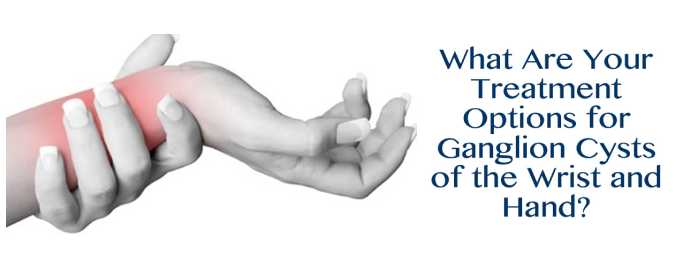Ganglion cysts are sacs of fluid that can form in your hand/wrist, the base of your fingers and the last joint in your fingers. A common ailment, ganglion cysts of the wrist and hand won’t endanger your health. However, they can be painful and affect the appearance of your hands. In many cases they will go away on their own, but when they grow large enough to cause tingling, pain and muscle weakness, surgery may be needed.
Understanding Ganglion Cysts of the Wrist and Hand
Ganglion cysts are quite common and occur mostly in women between the ages of 20 and 40. They can appear suddenly, or grow slowly over a long period of time, and may increase in size due to joint movement and repetitive activity.
There is no known cause for ganglion cysts of the wrist and hand, although they sometimes develop because of joint or tendon irritation. When they develop at the end of a finger joint, they are usually caused by arthritis of that joint. This happens more often in women over the age of 40.
In most cases, ganglion cysts don’t require treatment because they are painless and can change in size to grow larger or smaller, or even disappear entirely. However, if the cyst growth presses on the nearby nerves, they can cause muscle weakness, tingling and pain.
Surgical Treatment for Ganglion Cysts of the Wrist and Hand
Initial treatment for ganglion cysts may begin with observation only, depending on the severity and size of the cyst, and whether there is any pain. Without symptoms,most surgeons prefer to wait and see if surgery is necessary.
Since physical activity can cause the cyst to grow, and a splint or brace can help reduce joint pain and permit the cyst to shrink back down in size. It’s common for your surgeon to recommend hand therapy to improve the range of motion and strengthen the area as pain improves.
For large or painful ganglion cysts of the wrist and hand, the fluid can be drained from the cyst. This is called aspiration and is common if the cysts interfere with daily activities or cause a lot of pain.
Results and Recovery from Ganglion Cysts of the Wrist and Hand
Depending on the treatment approach, recovery time after removing a ganglion cyst varies. Aspiration alone often requires just wearing a hand splint to prevent irritation that might lead to regrowth. Surgery using an arthroscope is less invasive than traditional surgery and has a faster healing time.
Open surgery requires the longest healing time compared to other treatment options; however, even with surgery, most people are back to their normal routine in just a few weeks.
Because ganglion cysts of the wrist and hand are harmless tumors chances are good that you will have a full recovery. Because they may return after any of these treatments, however, a single treatment may not be enough. For diagnosis and treatment of a ganglion cyst by an expert, call our office today to schedule a consultation.
